The day after Thanksgiving, our family joined friends for a trek to Enchanted Rock, one of Central Texas’ most unique natural gems. Enchanted Rock is a large batholith, an underground rock formation exposed by erosion. 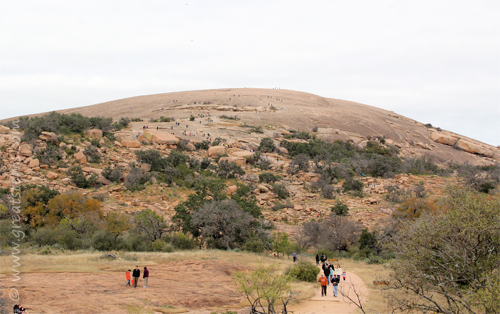
To visitors, it appears as a giant dome of protruding pink granite, though in reality Enchanted Rock and its nearby sister domes are together only a small part of a much larger globe of granite formed a billion years ago. Humans have been visiting the ancient rock for an estimated 11,000 years.
Enchanted Rock beckons hikers to trek up the slope to get a 360° view of the beautiful surrounding Texas Hill Country. The elevation sits at a mere 1825 feet above sea level but only rises about 425 feet above the soil. That might not sound like much, but the slope is just steep enough to make many hikers pause periodically to catch their breath, and it’s worth cautioning folks with bad knees that going up and back down again can take its physical toll.
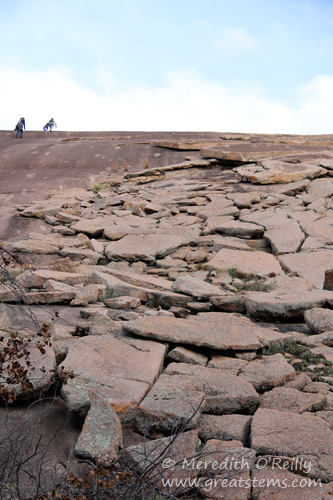
Weathering and other types of erosion over geologic time have given the rock its curved shape. Visible exfoliation on the rock’s flanks shows this work still in progress, with thick slabs sliding downhill. Elsewhere on the rock are mushroom-shaped blocks, formed over time by additional weathering.
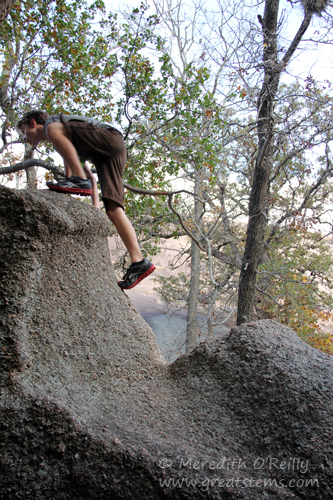
Many blocks invite climbing, and advanced rock climbers scale the larger domes with ropes and carabiners. For those who don’t mind narrow spaces, there’s a cave on the northeast side, close to the top — flashlights are recommended, or even better, headlamps (or a phone app, but be careful not to drop your phone in there!). Be sure to look for the arrows that are in there to guide you, and seriously don’t attempt traversing the cave if you are claustrophobic — be prepared to crawl and maneuver through small holes in full darkness. That being said, it’s fun.
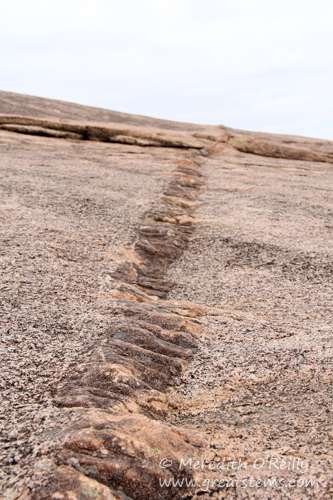
Along the surface of the dome, one might spot long linear lines called dikes. These formed long ago, when magma rushed to fill cracks along the granite.
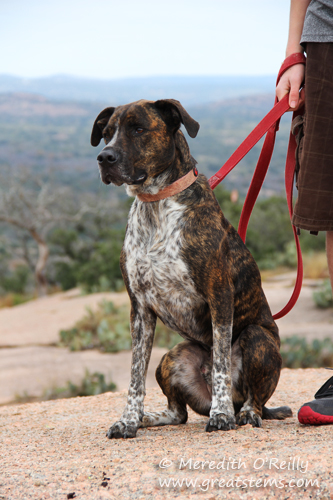
From the top of Enchanted Rock, you can pause and reflect on the beauty of the surrounding hill country, enjoy a picnic, or just enjoy breathing the fresh air. Adventurous souls might seek out the northeastern caves at this point.
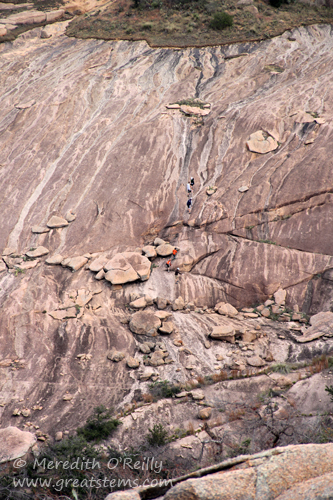
From the eastern side of Enchanted Rock, you might catch sight of visitors choosing to trek up a sister dome called Freshman Mountain. As you can see by the elevation difference, it’s much smaller but still quite impressive.
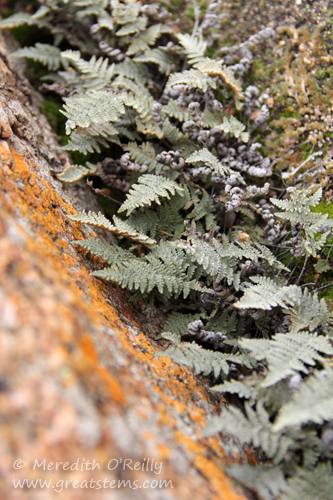
There’s plenty of plant and wildlife on Enchanted Rock. Plants grow where they can, in depressions and where eroded debris and blown-in soil accumulate in cracks and under boulders. In shallower soil, one might find ferns, cactus, tiny daisies, stonecrops, and other tough survivors. Where deeper soil has filled in cracks and depressions, trees and shrubs can grow. Lichen and mosses blanket many rocks.
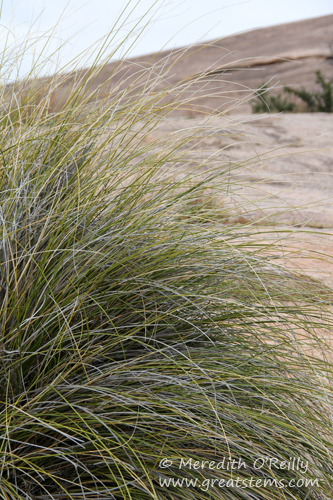
Vernal pools, sometimes called weather pits, are depressions that temporarily store rainwater and other moisture. During such times, some of the pools support tiny invertebrates called fairy shrimp, whose life cycle allows them to survive desiccation. Other pools become islands of plants. Above is Texas Sacahuista (Nolina texana).
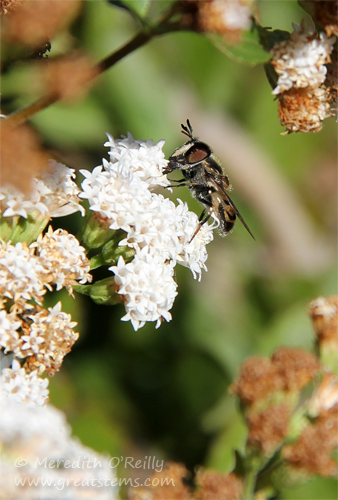
Despite the cold temperatures during our visit, hoverflies came out in multitude to visit the Eupatorium, or boneset, plants on top of Enchanted Rock.
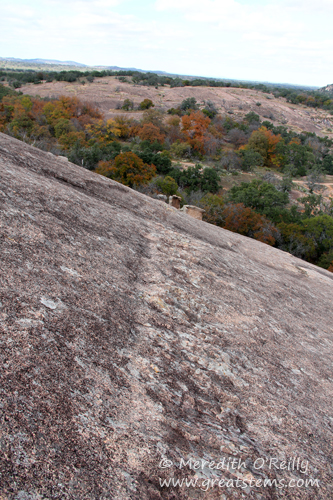
After spending some time on the top and in the cave, our group decided to head back down via the eastern slope rather than returning to the main trail. It’s rather steep, as you can see above, and not for those with knee troubles. I recommend good hiking shoes if you are going this way. Note the dike visible in the rock. FYI, the view of Freshman Mountain shown a few photos above was taken from this slope.
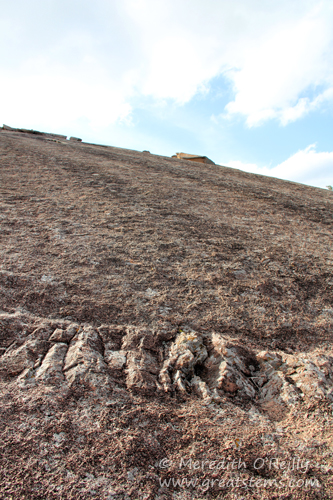
Here’s a view from the lower portion of the eastern side of the dome, looking up.
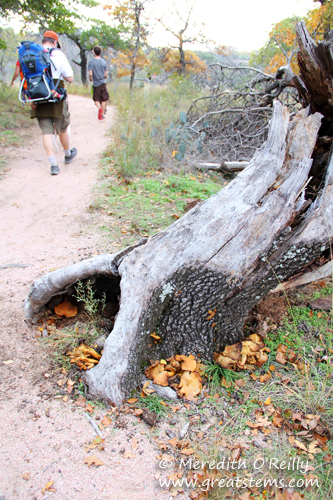
Down below, there are trails one can following around and through the park, all with outstanding scenery.
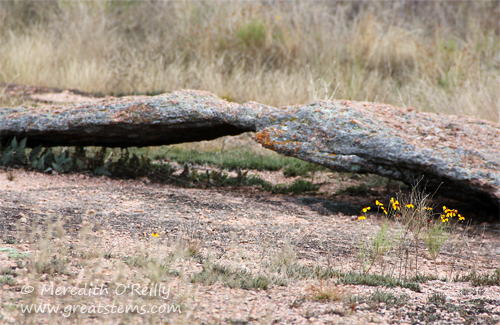
A natural bridge of sorts can be seen just off the Loop Trail on the north side or the rock.
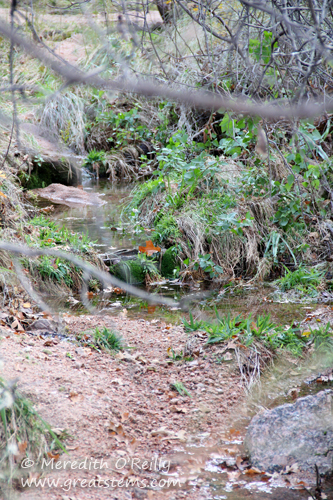
Some trails follow or cross over creeks. Along the way, you might spot coyote scat, many a bird, and more of Enchanted Rock’s most beautiful native Texas plants.
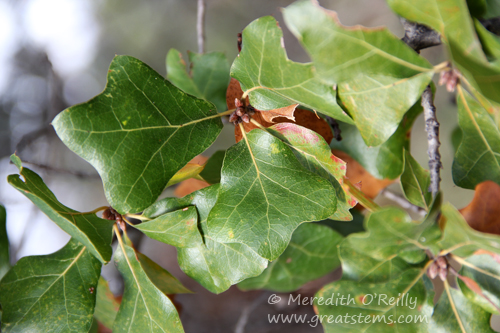
Blackjack Oaks, known for their tri-lobed bell-shaped leaves, are actually members of the Red Oak group. While the trees are found through the southeastern United States, there are only a few places farther west than Enchanted Rock (and the surrounding Gillespie County) that can boast Blackjack Oaks among their native plants. The oaks’ foliage turns a beautiful red in the fall.
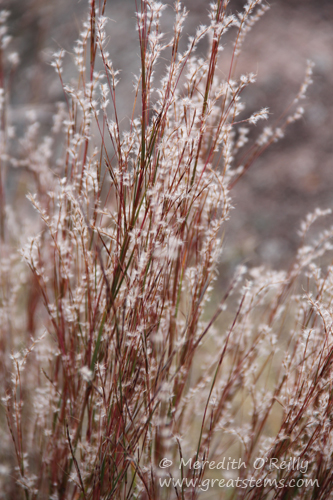
Browning grasses, decorated with seeds, will provide food sources for wildlife throughout the cold months ahead.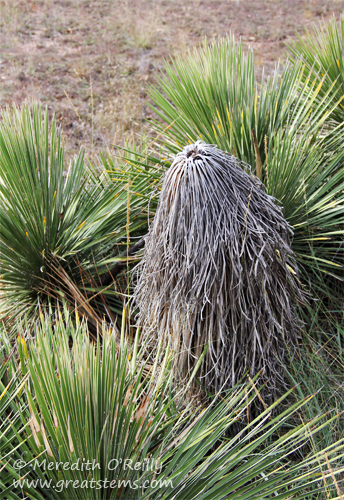 This dead yucca plant surrounded by its living family brings to mind Cousin Itt.
This dead yucca plant surrounded by its living family brings to mind Cousin Itt.
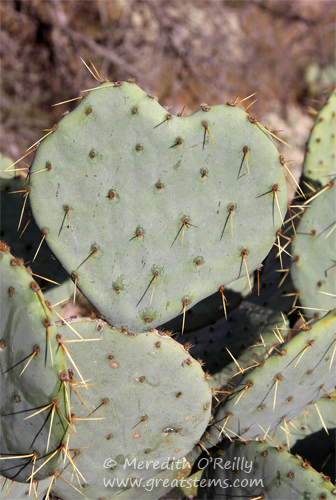
Of course, we can’t forget our dear prickly pear cactus.
Enchanted Rock is a state treasure, and one we love to visit whenever possible. I especially appreciated being there on the day after Thanksgiving, with other like-minded folks who wanted to get out to nature and avoiding the chaotic sales and ill-tempered crowds that take the “thankful” out of the holiday.
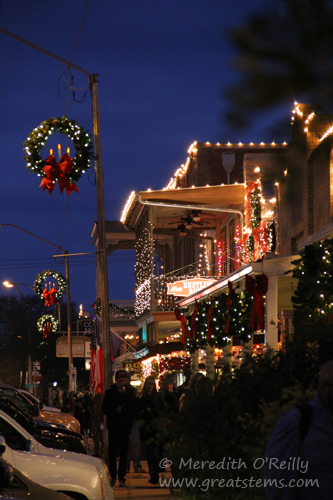 I will say that another treat in visiting Enchanted Rock on the day after Thanksgiving was getting to enjoy the beautiful holiday lights (and delicious food) in Fredericksburg (above) and in Johnson City (below).
I will say that another treat in visiting Enchanted Rock on the day after Thanksgiving was getting to enjoy the beautiful holiday lights (and delicious food) in Fredericksburg (above) and in Johnson City (below).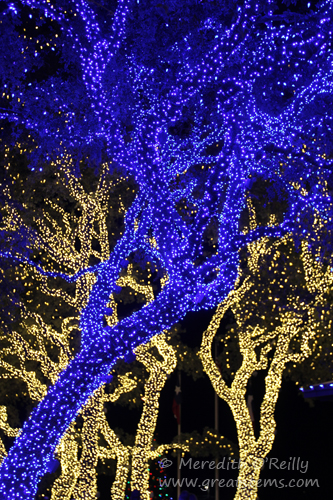
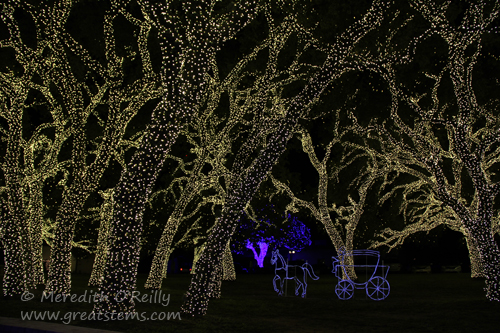
Pretty spectacular.
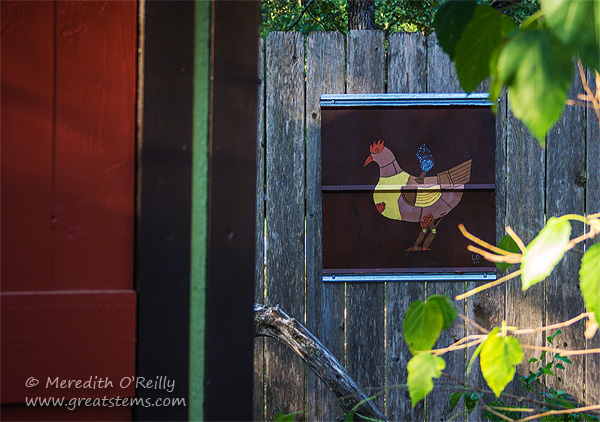
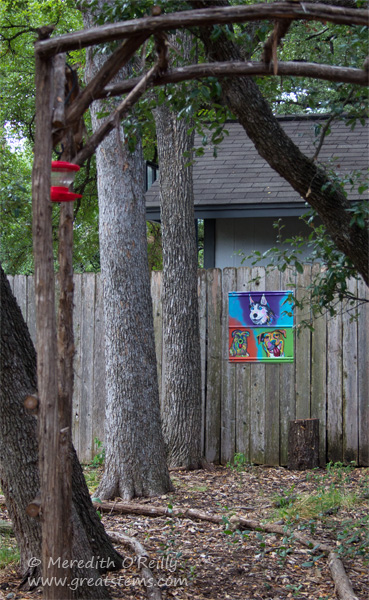
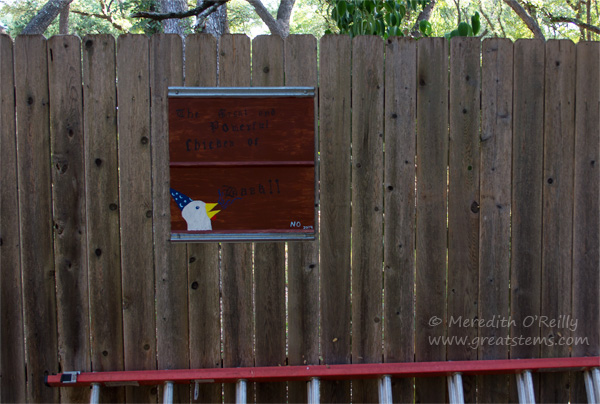
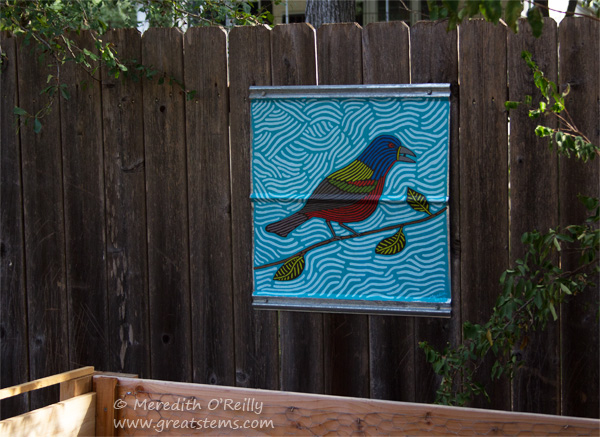
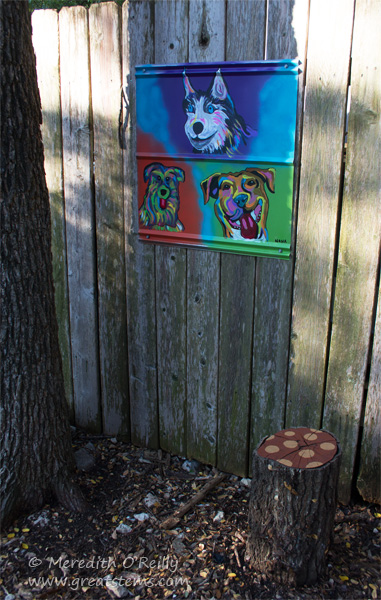
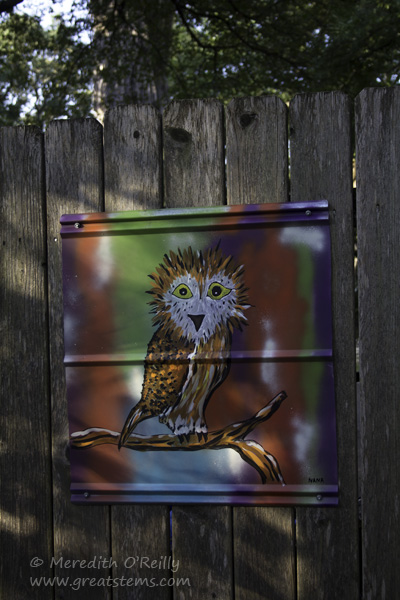
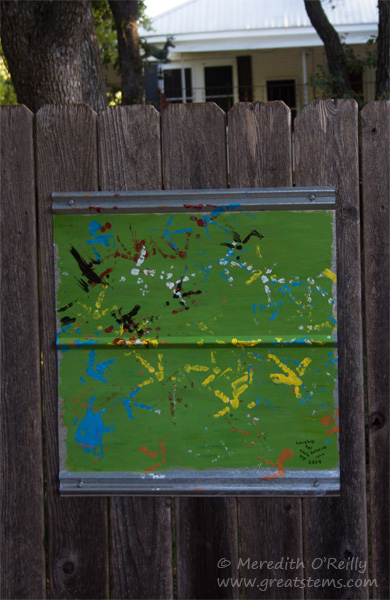
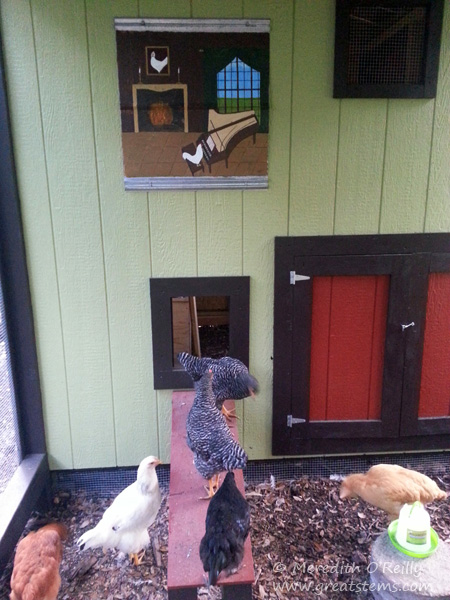
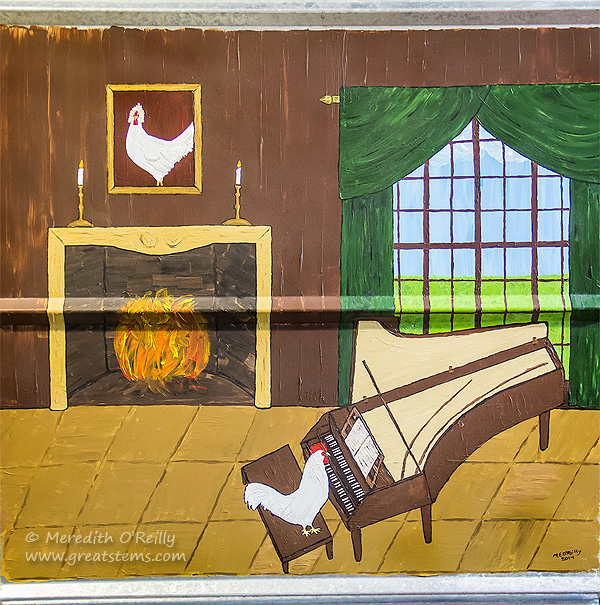
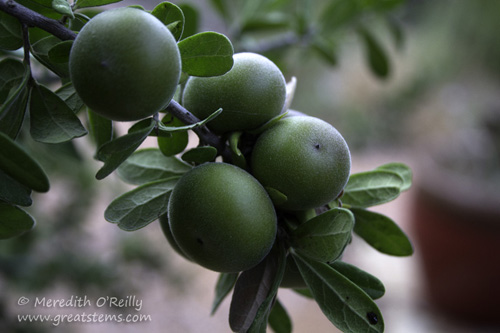
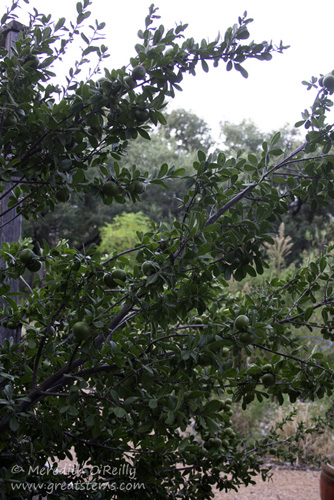
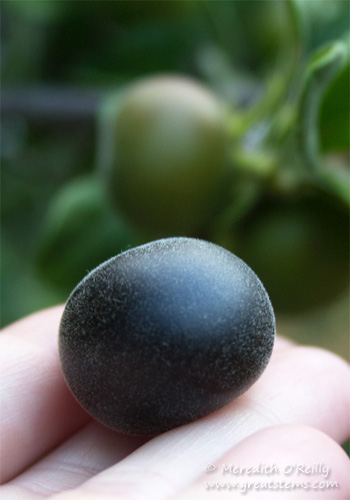 Within a flash it was in my hand. MINE, you squirrels and birds! I was so astonished that I got it first that I almost didn’t know what to do with it. Well, really, there was only one option.
Within a flash it was in my hand. MINE, you squirrels and birds! I was so astonished that I got it first that I almost didn’t know what to do with it. Well, really, there was only one option.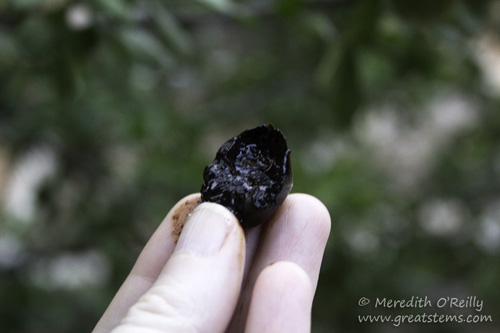
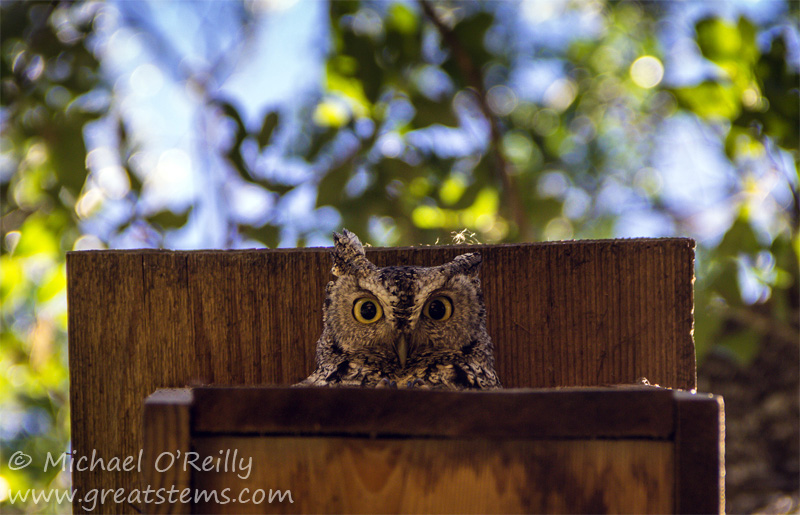
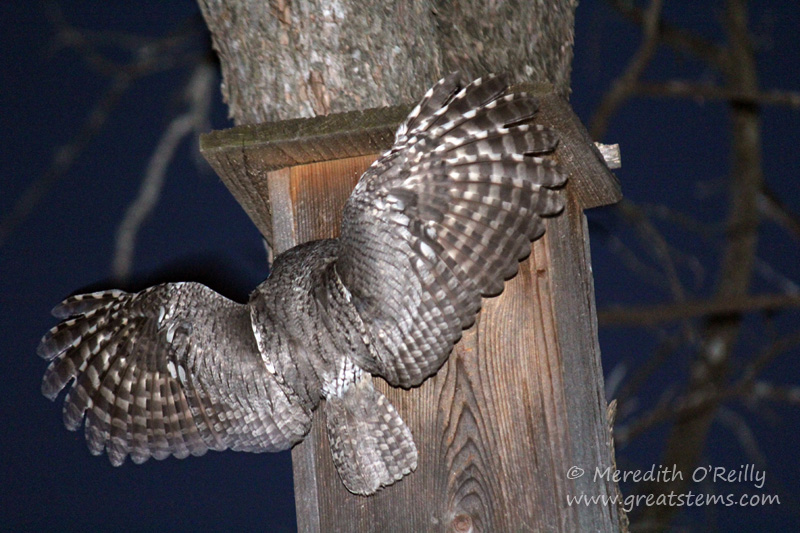
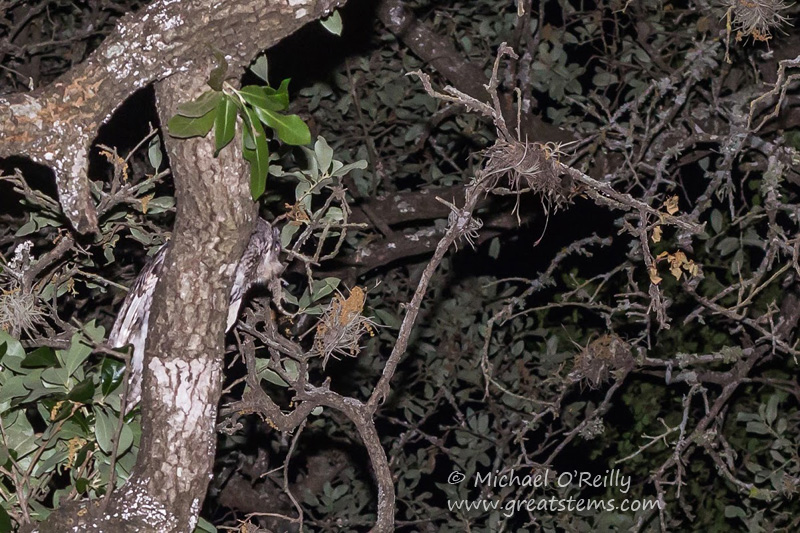
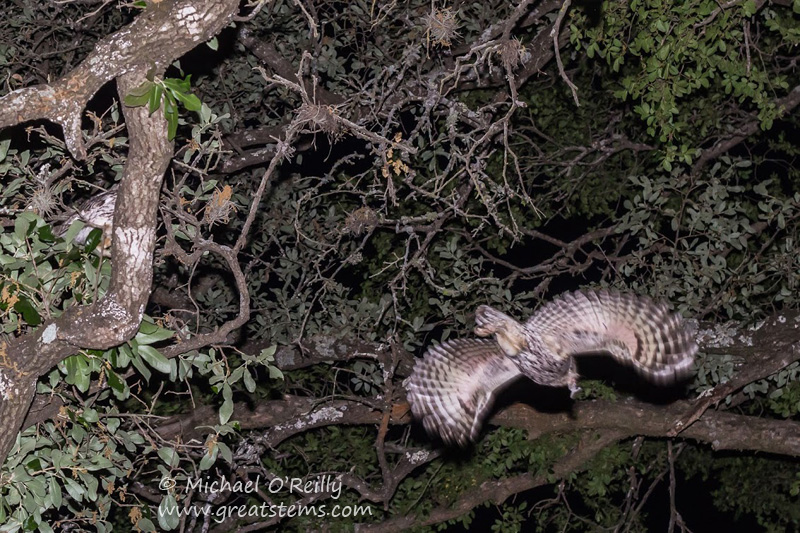
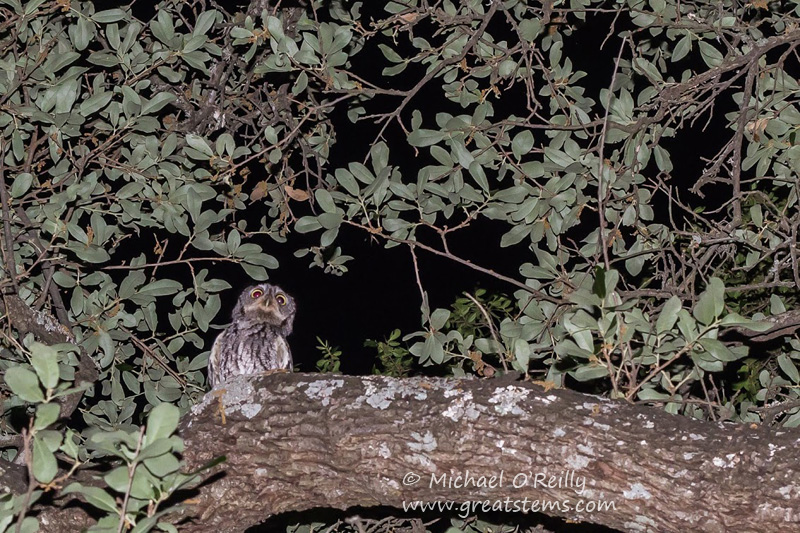
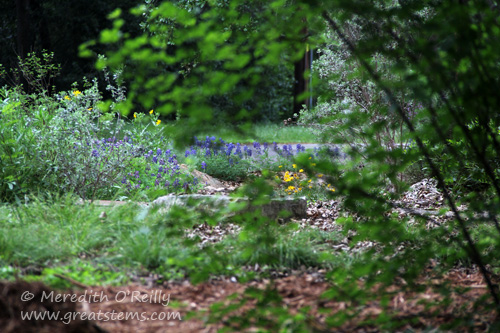
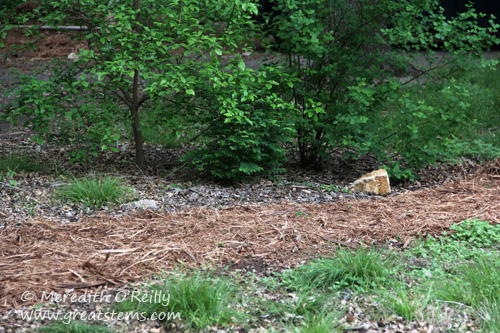
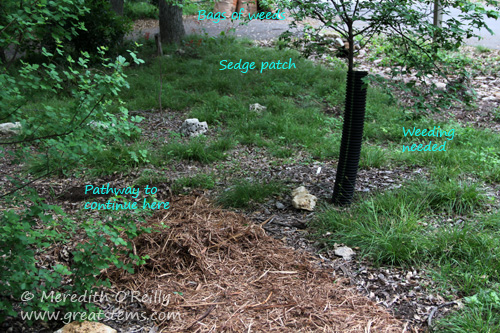
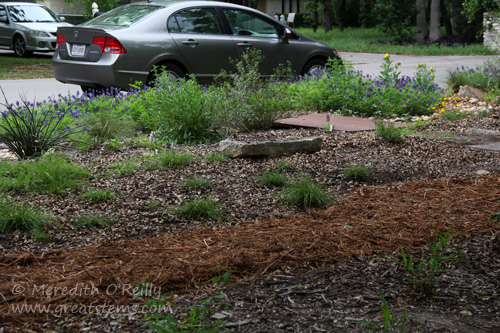
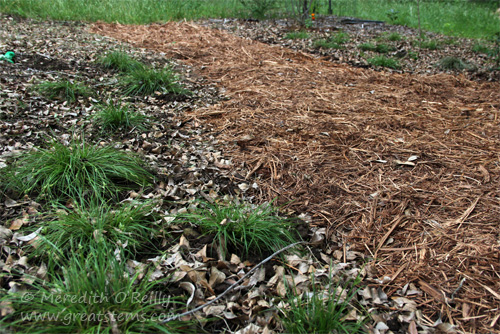
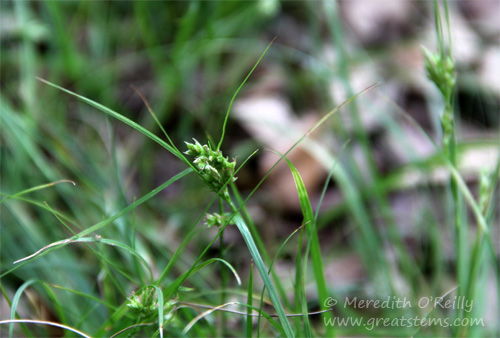
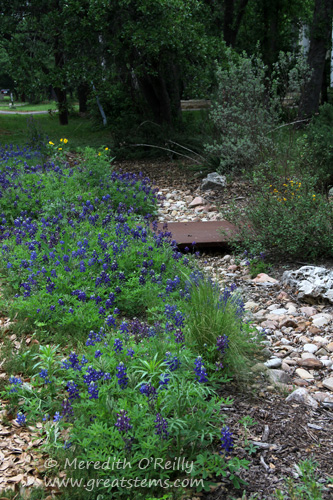
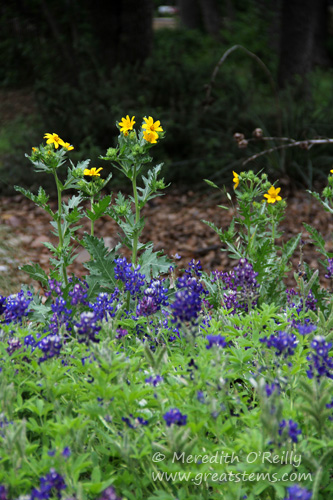
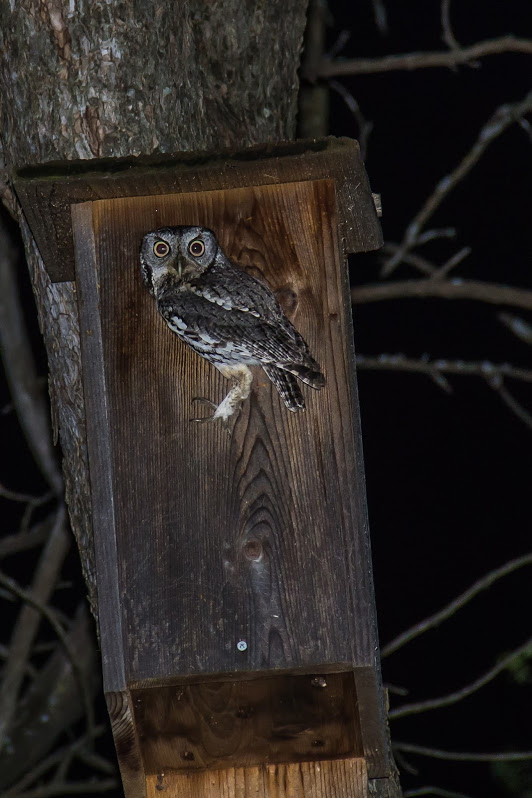
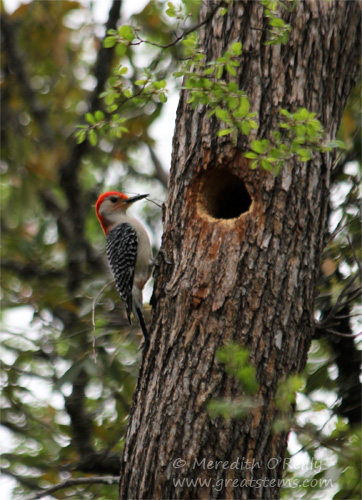 Here is the male. He frequents our birdfeeder, which we keep amply supplied with peanuts for him. Well, he does have to share with other visiting woodpeckers, blue jays, and other feathered friends who also love peanuts. That was the deal we made.
Here is the male. He frequents our birdfeeder, which we keep amply supplied with peanuts for him. Well, he does have to share with other visiting woodpeckers, blue jays, and other feathered friends who also love peanuts. That was the deal we made.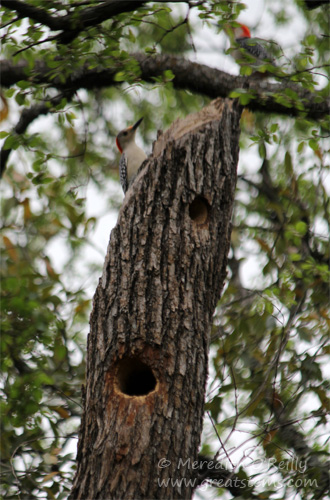
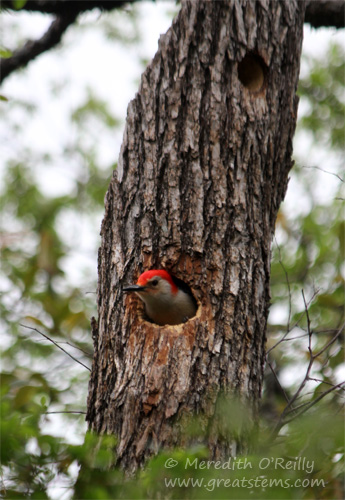 It’s hard to tell whether the birds are actually nesting right now or still excavating their cavity, but if the latter, they’ve been working on it a long time. I do know they are working hard.
It’s hard to tell whether the birds are actually nesting right now or still excavating their cavity, but if the latter, they’ve been working on it a long time. I do know they are working hard.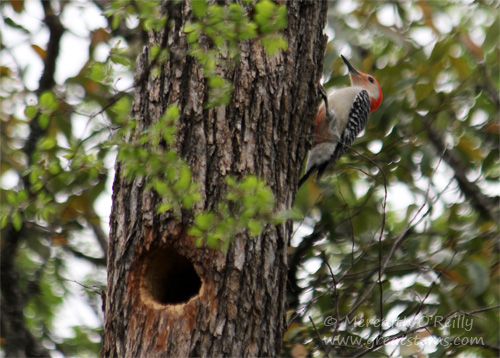
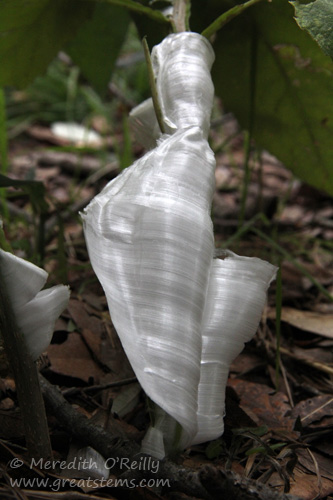 There were two reasons I started growing Frostweed in my wildlife garden. The first is that it is a valuable nectar source for pollinators, especially migrating Monarchs, during its bloom time in the fall. The second is that when conditions are right in the late fall or winter, beautiful curling ice ribbons might exude from the stem’s outer layers.
There were two reasons I started growing Frostweed in my wildlife garden. The first is that it is a valuable nectar source for pollinators, especially migrating Monarchs, during its bloom time in the fall. The second is that when conditions are right in the late fall or winter, beautiful curling ice ribbons might exude from the stem’s outer layers.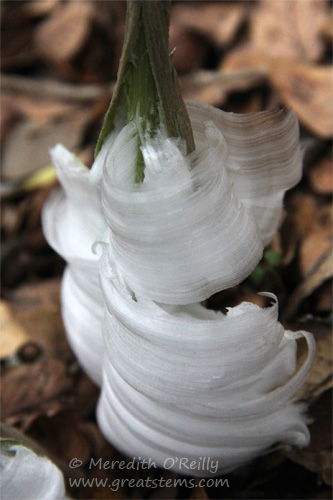
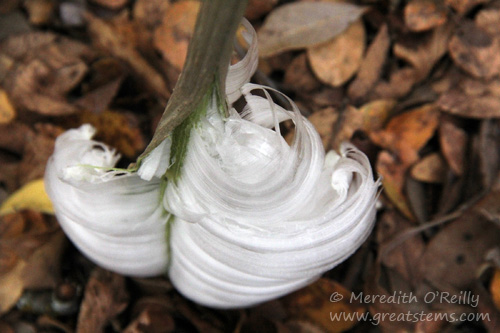
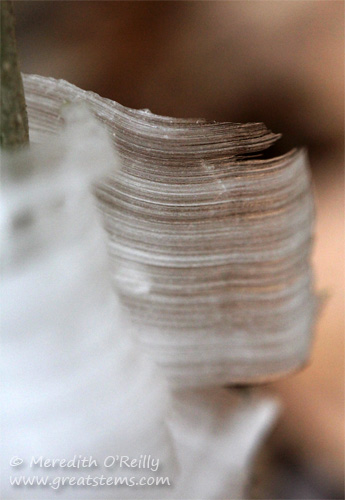
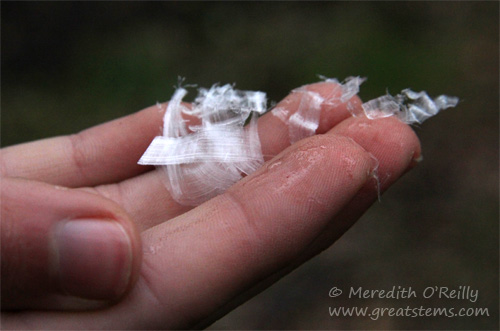
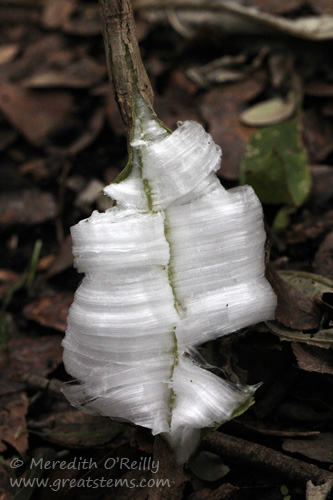
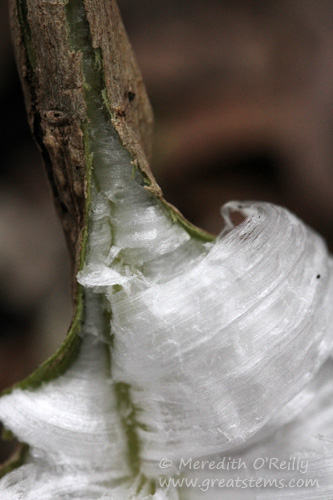
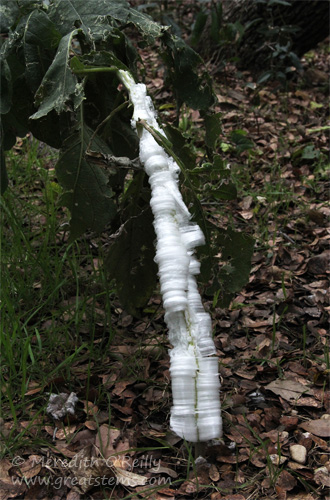
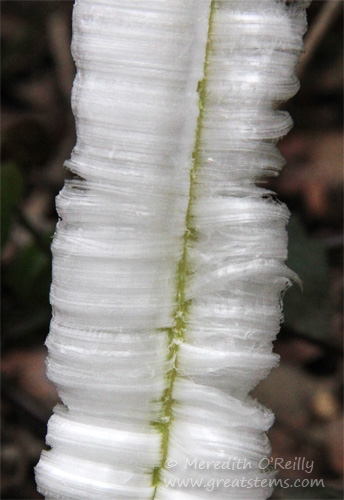
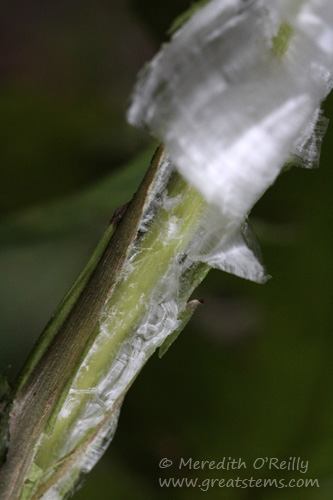
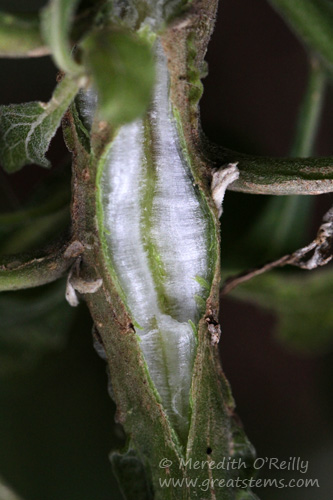
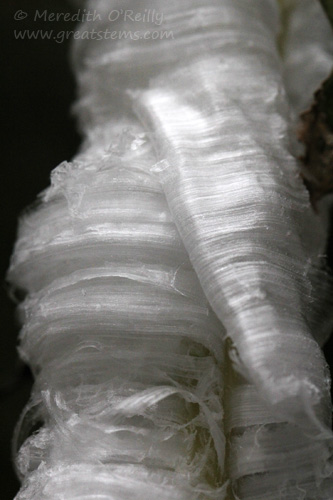
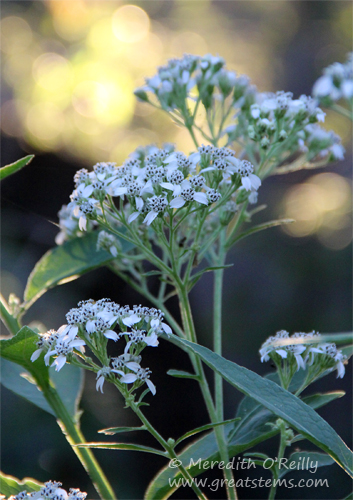
















 This dead yucca plant surrounded by its living family brings to mind Cousin Itt.
This dead yucca plant surrounded by its living family brings to mind Cousin Itt.



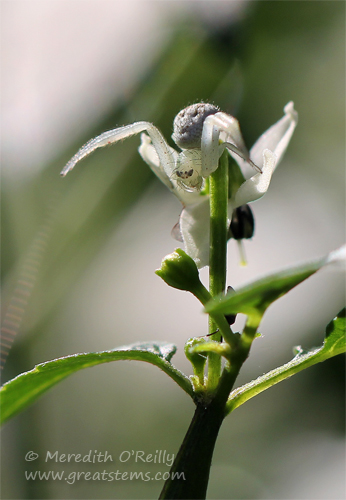 These little 8-eyed wonders do not spin webs like orbweavers do but instead are ambush hunters. They position themselves carefully on a flower then wait with the utmost patience for an unsuspecting bee or fly to land.
These little 8-eyed wonders do not spin webs like orbweavers do but instead are ambush hunters. They position themselves carefully on a flower then wait with the utmost patience for an unsuspecting bee or fly to land.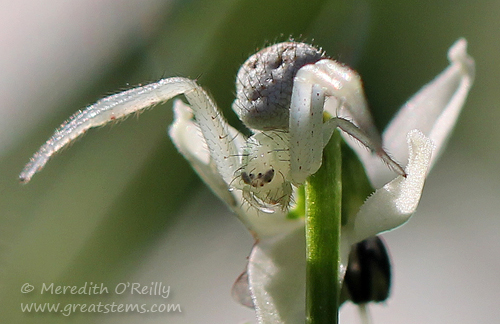
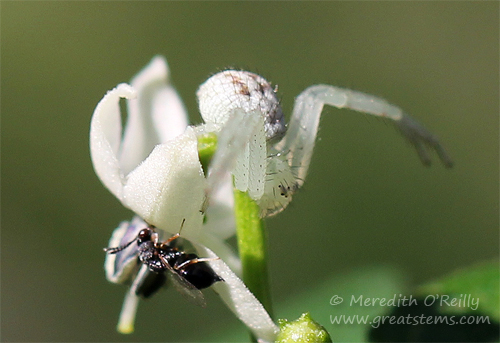 While this white crab spider (genus Mecaphesa) waited on the back of the flower, a little fly landed for some nectar, completely unaware of the danger it was in.
While this white crab spider (genus Mecaphesa) waited on the back of the flower, a little fly landed for some nectar, completely unaware of the danger it was in.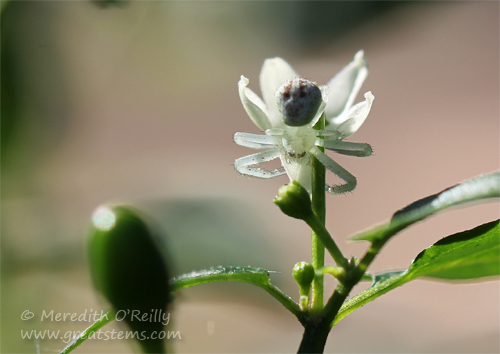 But I questioned the spider’s position on the back of the flower, thinking a more frontal position would be more strategic, until I saw the spider close its strong front legs in a flash. The fly did get away, but I consider it lucky.
But I questioned the spider’s position on the back of the flower, thinking a more frontal position would be more strategic, until I saw the spider close its strong front legs in a flash. The fly did get away, but I consider it lucky.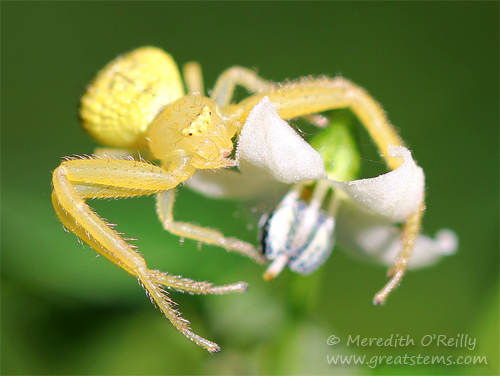
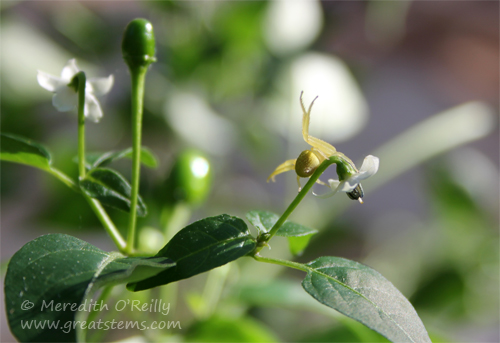
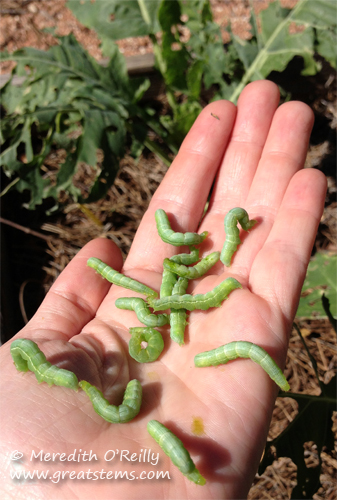 Lifting the remaining leaf bits, I discovered the culprits. Cabbage Loopers — argh! I love caterpillars, seriously I do, but I have to draw the line on those that would eat my veggies down to nothing. Time to hand-pick them off! The total on all the plants: 37 cabbage loopers plus 4 salt marsh caterpillars and possibly 1 banded woolly bear. I moved the fuzzies to other sections of the yard — I know they’ll find plenty to eat over there, such as horseherb. The cabbage loopers, on the other hand — they get to do their part in the ecosystem as food sources for other critters. Originally I planned to put them in the bird feeder trays, but my friend Jan raises turtles, and they LOVE wiggling little caterpillars and itty bitty little wormsies. Perfect.
Lifting the remaining leaf bits, I discovered the culprits. Cabbage Loopers — argh! I love caterpillars, seriously I do, but I have to draw the line on those that would eat my veggies down to nothing. Time to hand-pick them off! The total on all the plants: 37 cabbage loopers plus 4 salt marsh caterpillars and possibly 1 banded woolly bear. I moved the fuzzies to other sections of the yard — I know they’ll find plenty to eat over there, such as horseherb. The cabbage loopers, on the other hand — they get to do their part in the ecosystem as food sources for other critters. Originally I planned to put them in the bird feeder trays, but my friend Jan raises turtles, and they LOVE wiggling little caterpillars and itty bitty little wormsies. Perfect.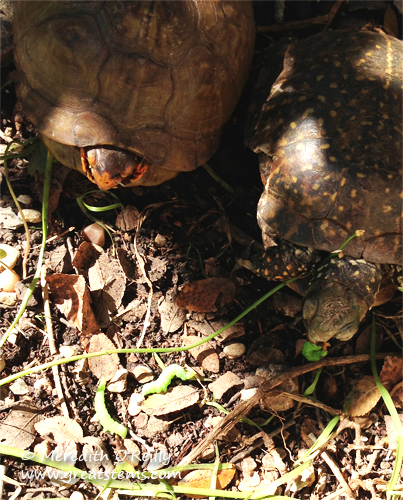
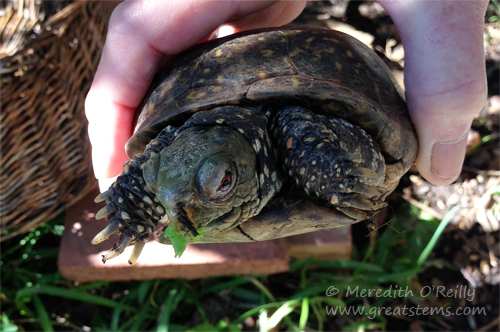 Sorry little caterpillars, but I need my broccoli and cauliflower! I’m hopeful that the plants will recover — they already have new leaves forming.
Sorry little caterpillars, but I need my broccoli and cauliflower! I’m hopeful that the plants will recover — they already have new leaves forming.